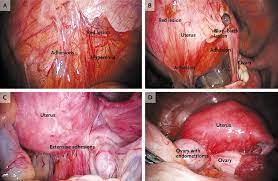
Endometriosis is a chronic medical condition that affects people with uteruses, where tissue similar to the lining of the uterus (endometrium) grows outside the uterus. This condition can cause a range of symptoms and, in some cases, lead to fertility issues.
Endometriosis can cause various symptoms, which may vary in severity and can include:
The exact cause of endometriosis is not well understood, but several theories exist, including:
Diagnosing endometriosis typically involves a combination of medical history, physical examination, and imaging tests. The most definitive diagnosis is made through laparoscopy, a minimally invasive surgical procedure during which a surgeon can directly visualize and biopsy endometrial tissue. Imaging studies like ultrasound or MRI may help identify cysts or other signs of endometriosis.
Endometriosis management aims to relieve symptoms, improve quality of life, and, in some cases, address fertility concerns. Treatment options may include:
It’s crucial for individuals with endometriosis to work closely with healthcare providers to develop a personalized treatment plan based on their symptoms, goals, and overall health. Endometriosis can be a chronic condition that requires long-term management, and regular follow-ups are essential to monitor the progression of the disease and adjust treatment as needed.
WhatsApp us